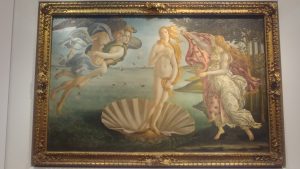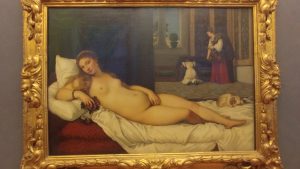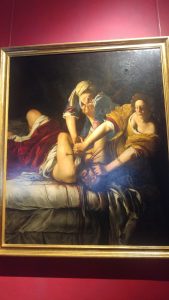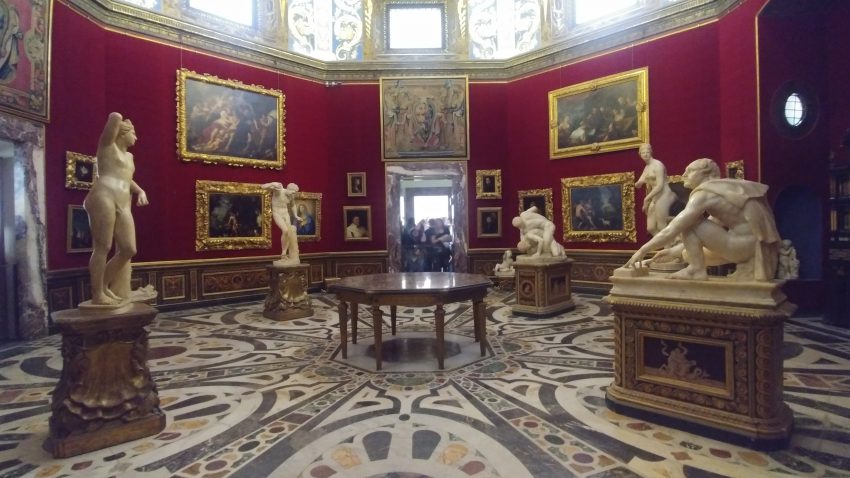Florence Italy is the recognized birthplace of the Italian Renaissance, a period in history following the Middle Ages which began in the 14th century and peaked during the 15th and 16th century. The Renaissance was a rebirth of the classical values of ancient Greece and Rome and an appreciation for the individual. This humanistic approach brought about a new confidence and optimism in the goodness of people. As the Renaissance spread across Europe it ushered in the modern age.
The best way to understand this era is through its art, and one of the best places to appreciate that art is the Uffizi Gallery. We have compiled a list of our favourite representative paintings for your consideration.

- Primavera (1477-1482) and Birth of Venus (1485), Sandro Botticelli
 Try as we might we could not pick a favourite between these two masters from Botticelli. Using mythology as the inspiration these painting weave whimsical, visually pleasing and instantly recognizable images together to tell the story.
Try as we might we could not pick a favourite between these two masters from Botticelli. Using mythology as the inspiration these painting weave whimsical, visually pleasing and instantly recognizable images together to tell the story.
- Venus of Urbino, 1538, Titian

Since paintings of nudes were frowned upon during the Renaissance, many painters circumvented this norm by painting mythology, such as the goddess Venus. In this well-known painting Titian chose to put his Venus in a more modern and mundane setting.
 Judith Decapitating Holofrenes, Artemisia Gentileschi, 1620
Judith Decapitating Holofrenes, Artemisia Gentileschi, 1620
Gentileschi, who studied in Rome, is one of the better known female painters of the Renaissance. Drawing her inspiration from the biblical story Gentileschi depicts her Judith as a fierce tenacious warrior struggling to accomplish her goal. Many other better known painters have tackled this subject matter, but as was common in the time their Judith was an ethereal beauty without the stress or strain of the actual beheading as part of the picture.
- Madonna with a Goldfinch, 1505-1506, Raphael

This colourful painting depicts Madonna with Jesus and John the Baptist as young toddlers. Raphael was best known for his portrayal of Madonna, as well as his frescoes decorating the Vatican.
- Annunciation, 1472, Leonardo DaVinci
 Considered DaVinci’s first major work, this depiction of Madonna and the Archangel Gabriel displays the style that would mature in DaVinci’s later painting, such as perspective depicted by a misty background.
Considered DaVinci’s first major work, this depiction of Madonna and the Archangel Gabriel displays the style that would mature in DaVinci’s later painting, such as perspective depicted by a misty background.
We would be remiss in not mentioning Caravaggio’s painting of Medusa (1598) which is used in the marketing for the Uffizi Gallery. This round painting has a special place in the gallery and is one of the better known works of a very well-known painter.
The Uffizi Gallery strictly adheres to timed entry tickets which can be purchased in advance online to avoid what is often very long lines at the Gallery, especially if there is a cruise ship or two in port that day. When you do purchase be sure to go directly to the official Uffizi Gallery website (https://www.uffizi.it/en) which comes up sixth on a Google search. When you purchase tickets from other sites there will be a surcharge added. The Gallery displays very prominent signage that they are not responsible for payment of additional charges. Arrive at least 15 minutes before your entry time and be prepared for a security search, which is common at most sites in Europe these days.
